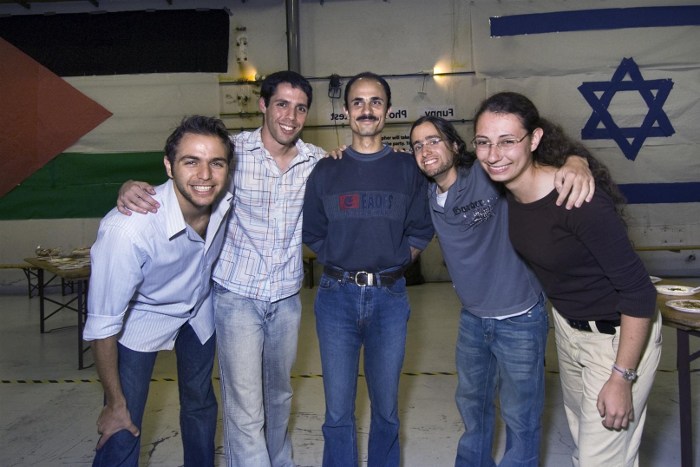Director's Corner
27 August 2009
The beauty of international collaboration
Today's issue features a Director's Corner from Jean-Pierre Delahaye, CLIC study leader and latest addition to the GDE Executive Committee.
As a newcomer to the ILC GDE Executive Committee (EC), which I feel is a great honour, I have been kindly (but firmly) invited to write one of the monthly Directors' Corners for ILC NewsLine on a subject of my own choice. I therefore decided to write a few words on my favourite subject, the beauty of International Collaboration.
I have personally been convinced during my whole professional life of the great advantages and the increasing necessity of International Collaboration. This is one of the main reasons why I work at CERN. As many of you know, CERN was created in September 1954 not only to perform high-energy physics research, but also to allow people from different nationalities who fought each other during the first and second world wars to work together in order that such horrors never happen again. The visionary scientists like Louis de Broglie, Eduardo Amaldi, Lew Kowarski, Niels Bohr and others who promoted the idea, were convinced that by working together, people from different nationalities would not only get to know and appreciate each other better, but they would realise that "good guys" and "bad guys" exist in every country and nationality, with a proportion of each corresponding to a constant of mankind. Demonstrating the universality of this constant could constitute an interesting thesis in sociology.
 An example of the beauty of international collaboration in science: an Israeli- Palestinian party organised at CERN by summer students from the respective countries. Image: CERN. An example of the beauty of international collaboration in science: an Israeli- Palestinian party organised at CERN by summer students from the respective countries. Image: CERN. |
At this point, I would like to share a personal story: when I told my grandmother that I was very pleased to be given the opportunity to practice physics in the international context of the CERN organisation, she appreciated the physics, but was very concerned about the international aspect, because in her mind, collaboration had a negative connotation in relation to second World War. A few years later, when she had the opportunity to meet one of my foreign CERN colleagues, she recognised how lucky I was to have such a good friend and was then convinced of the beauty of International Collaboration.
The forward-looking politicians who created CERN had indeed understood that the most important is not so much what the people working at CERN would do, but that they do it together in close collaboration. And it is working extremely well above all expectations. It is interesting to note that, in spite of a natural tendency for people of the same nationality to get together, the teams which perform best are those comprising various nationalities, provided that qualities of each nationality are used in a complementary way.
The other great idea of these visionary scientists/politicians was to choose basic physics research without any immediate application as the subject of collaboration and with the strict obligation to make any discovery available to the world community. Thus, the world wide web (WWW), when developed at CERN, was immediately made openly and freely available. This is one of the reasons why it spread so rapidly over the world and became so popular. The future could have been very different if the WWW had been created by a private company looking for short-term profit!
International Collaboration also provides the opportunity to address complex and challenging subjects that one single country would be unable to tackle. Not only are (limited) resources put together, but also, by cross-fertilisation of multi-cultural skills, the best use is made of those resources, with a multiplying factor generated by synergies and exchanges following the well known equation: 1+1>>2.
Moreover, in the quest for more and more ambitious physics facilities aiming at moving forward the high-energy frontier, the motivation for world-wide International Collaboration is greater than it has ever been. In this context, accelerators have a lot to learn from physics and detectors. It is indeed surprising that the LHC accelerator was built with 80% resources from CERN and about 20% resources from external collaborations, whereas the LHC detectors were built with exactly the same proportion of resources, but the other way round, i.e. 20% from CERN and 80% from external collaborations.
Linear colliders constitute an excellent opportunity for International Collaboration, yet world-wide collaboration is a necessary condition for success. R&D is especially suited to International Collaboration. Developing novel technologies or addressing new challenges require creative imagination which is much more efficiently generated in an international collaboration with multi-cultural skills and multiple working approaches. As a good example, the CLIC study is done by a multi-lateral collaboration of 33 volunteer institutes from 18 countries (from which seven are outside the present CERN member states). The ILC collaboration is even more impressive with the Reference Design Report (RDR) signed by about 700 individuals from 84 institutes in 12 countries. I am particularly pleased to participate in both studies. The development of both approaches in a constructive, complementary and fruitful collaboration is necessary in order to provide the best possible choice when the results from the LHC (and the Tevatron) will better define the requirements for physics in the future. I am fully committed and will do my best to promote and foster collaboration on Linear Colliders. I take the opportunity to welcome Brian Foster who kindly accepted to participate in the CLIC Steering Committee (CSC). I do hope that the crossed participation of Brian in the CSC and of myself in the EC will strengthen the collaboration between the two studies in the best interest of high-energy physics (HEP) and of linear colliders.
In conclusion, new HEP facilities following the LHC are only envisageable in the framework of international, multi-regional collaborations. World-wide collaboration is therefore a necessary condition and the key to their success. In this respect, the present reflection on the globalisation and enlargement of CERN is heading in the right direction and very timely. This is why I am, as many of you, convinced of the beauty of International Collaboration and hope that together, we can make linear colliders a success story and a shining example of world-wide, multi-cultural collaboration.
-- Jean-Pierre Delahaye

